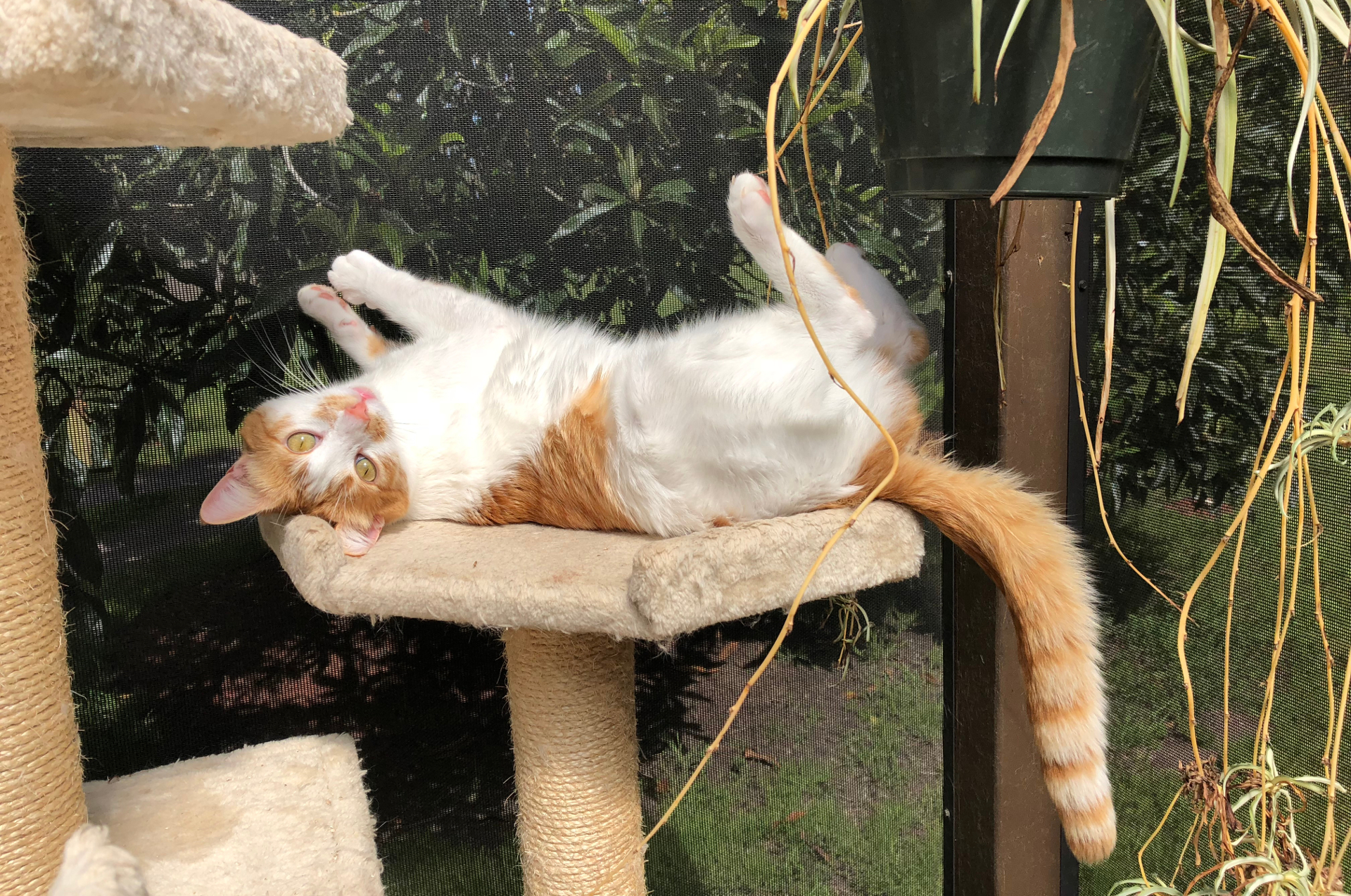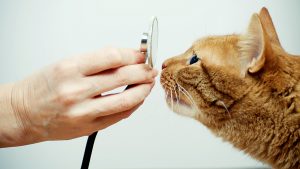Constipation is a common problem in cats and in a severe form called “megacolon,” the large intestine actually becomes enlarged and filled with hard fecal material.
What are constipation and megacolon?
Constipation actually refers to a condition in which the time it takes for the ingested food to travel through the digestive system is prolonged. As a result, the feces are usually dry and hard. The term “obstipation” refers to prolonged constipation. In some cats, megacolon develops, in which the large intestine becomes enlarged and filled with hard fecal material.
What causes megacolon?
There are multiple causes of constipation and megacolon. In almost two-thirds of the cases, the condition is termed “idiopathic megacolon” because the cause cannot be found, however, it is thought to be due to an abnormality in the smooth muscle of the large intestine. Other causes include a narrowing of the pelvic area (often due to pelvic fractures), nerve injury, or spinal cord deformities seen especially in Manx cats. Much more rare causes include cancer and inflammation.
What are the risk factors for constipation and megacolon in the cat?
Constipation and megacolon may be seen in cats of any age, breed and gender, however they are more commonly seen in middle-age cats and domestic shorthair cats. Male cats appear to be twice as likely to develop these conditions when compared to female cats. Some feel that a sedentary lifestyle may contribute to the development of constipation and ultimately megacolon. Obesity may adversely affect the course of the disease.
What are the symptoms of constipation and megacolon in cats?
The symptoms found in cats with constipation and megacolon depend upon the severity of the condition. In almost all cases, the owner will notice the stool is reduced or absent and is hard and dry. The cat may be found straining in the litter box. Some cats will spend long periods of time simply standing in the litter box or may continue to return to the litter box to try to defecate. The cat may defecate outside of the litter box. If there’s severe straining, mucous or blood may be passed. Occasionally a cat will develop diarrhea because the feces are irritating the intestine. The cat may vomit, and even vomit while he is straining to pass stool. As the condition becomes more severe, the appetite may be decreased and weight loss is often noted. Ultimately, the cat may become lethargic and dehydrated. If the cat has pelvic or nerve injuries, urinary incontinence may be seen.
How are constipation and megacolon diagnosed?
The diagnosis of constipation and megacolon are usually based on the history as well as results of a physical examination, including a complete neurological exam. A complete blood count (CBC), chemistry panel, and urinalysis are performed to rule out other health problems. Usually a thyroid test is recommended as well. Abdominal radiographs (x-rays) are evaluated to identify predisposing factors such as a narrowing of the pelvis or foreign bodies within the intestine. A barium series may be recommended, as well as a colonoscopy, which would require anesthesia.
How are constipation and megacolon treated?
The treatment of constipation and megacolon will depend upon the severity of the condition. Simple constipation may resolve on its own with time. Mild constipation generally responds to a diet change in which more fiber is added to the diet. This may be accomplished by switching the cat to a commercial diet with increased fiber, or alternatively, adding psyllium, wheat bran, or pumpkin to each meal. It’s very important that cats drink more water when they are on these diets. Suppositories may also be used.
If the constipation becomes more severe or recurs, the cat usually needs to be hospitalized so the dehydration can be corrected. The cat may require several anesthesias as he receives enemas to remove the hardened fecal material. Enemas should only be given by a veterinarian, and sodium phosphate enemas (such as Fleet brand) should never be used as they can be deadly to cats. Usually, the cat will be started on an oral medication called “cisapride,” which is given to stimulate the movement of food through the digestive tract. It’s not available as a commercial product, but is available by prescription through compounding pharmacies. Cisapride is in a class of medications called “colonic prokinetic agents.” Other drugs in this class include ranitidine and nizatidine. Another medication called “lactulose” may also be administered. Lactulose is a type of laxative and also softens the stool. If the cat does not respond to this treatment, other laxatives may be tried. In addition, a diet that is highly digestible and will result in less fecal material should be used instead of the fiber-supplemented diet. High fiber diets should not be used in cats with chronic constipation or megacolon; instead all-meat diets are recommended.
Many cats diagnosed with megacolon do not respond adequately, and surgery is the only option. A colectomy, or removal of the colon is performed. In general, the prognosis is favorable, although some cats may experience diarrhea for weeks to months after the surgery. For cats with abnormal narrowing of the pelvis, surgery can be performed to make the pelvic opening wider.








